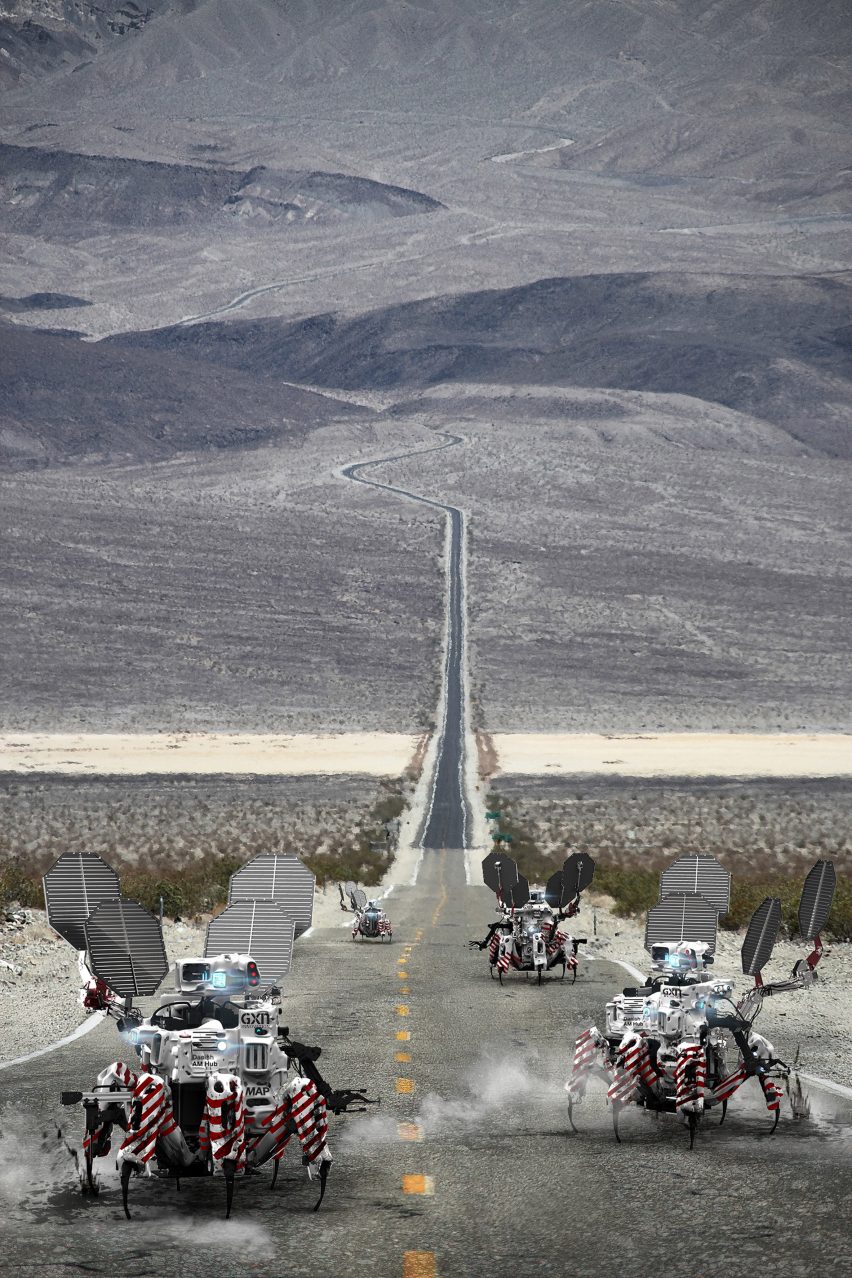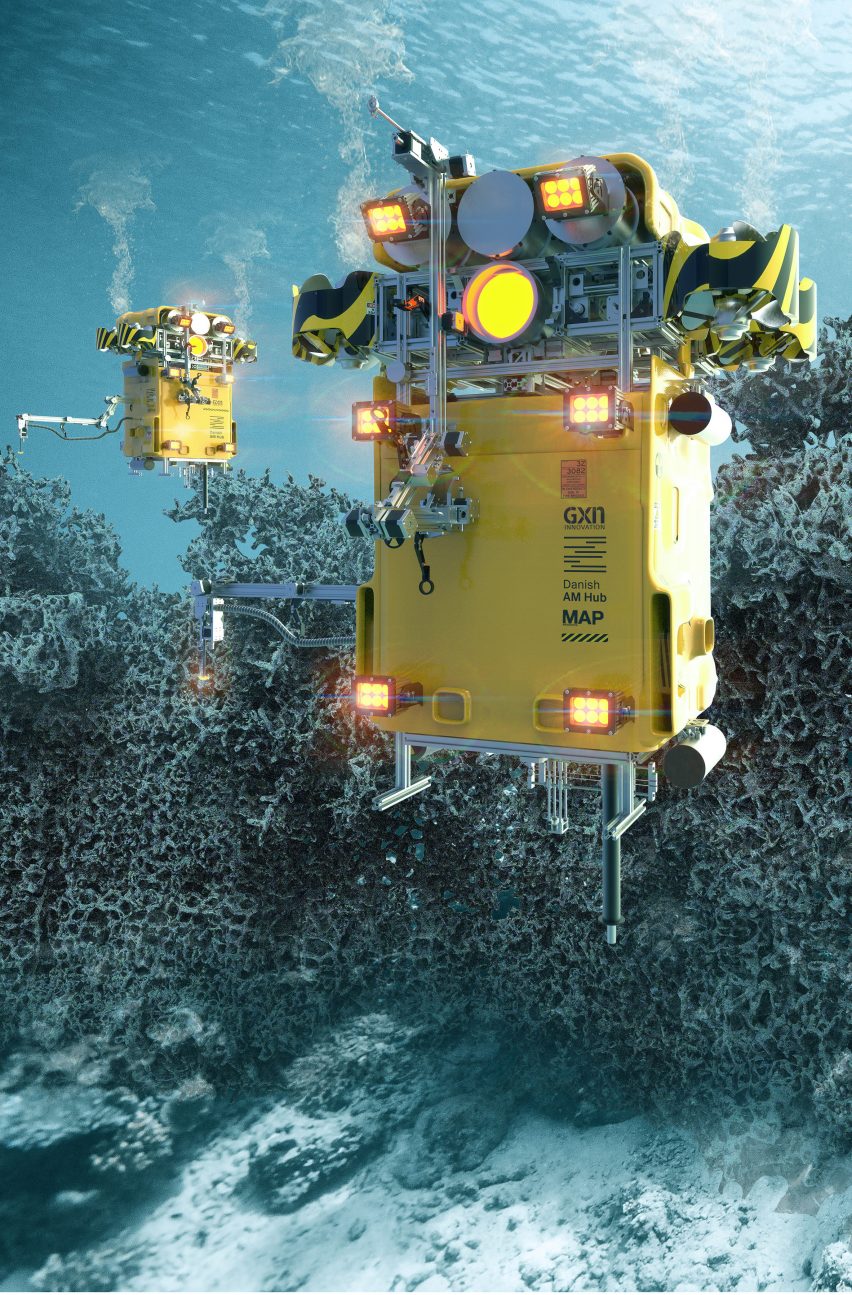
Danish designers propose using roaming 3D-printing robots to repair environments
Buildings and coastlines could be monitored by fleets of autonomous repair robots, according to a Danish initiative that advocates "freeing" 3D printers to fix global problems.
Called Break the Grid, the initiative is a collaboration between three future-focused Danish companies — GXN Innovation, the research arm of architects 3XN; additive manufacturing platform The Danish AM Hub; and Map Architects.
Solving issues of deterioration
The companies believe that pressing global challenges like coastline erosion and infrastructure deterioration could be fixed by giving 3D printers the power to move and act autonomously.
They envisage fleets of roaming 3D-printers moving across land, air and even sea.

"Freeing 3D printers to meet these challenges could be a revolution in the making," explained GXN founder Kasper Jensen.
"By enabling 3D-printing robots to crawl, swim and fly, we can address pressing environmental threats around the world at a lower cost and with greater efficiency."
Three robots for different environments
The companies have come up with three different concept designs to address three separate use-cases. All of them autonomously scan the environment, identify problem areas and act to fix them.
One of the 3D-printer designs is meant to move underwater, building artificial reefs — structures designed to protect coastlines from eroding and to provide habitat for marine life.

It would work by extruding a mixture of ocean-floor sand, glue inspired by an oyster-produced natural adhesive, and a wet-setting binder.
Meanwhile, a six-legged robot would scuttle through cities, spotting and repairing micro-cracks in concrete. With earlier detection, the damage could be fixed before it allows water and oxygen to seep in, leading to further corrosion.
Potential for material to "self-heal"
The Break the Grid team imagines that these land-based robots could 3D print a porous filler mixed with the fungus trichoderma reesei, which promotes the formation of calcium carbonate, effectively making the material self-healing.
This robot could also patrol concrete infrastructure remote from urban environments.

The third concept is a drone meant to operate in the air around the tops of high-rise buildings. Where the facades of older buildings have deteriorated, compromising their energy efficiency, these drones would swoop in to repair the damage.
This concept draws on new materials research that suggests a customisable composite of glass and polymers could be used to build thermal insulation onto existing structures.
Concepts based on emerging tech
While Break the Grid's designs are theoretical, they are all based on real emerging technologies. The team has also been hacking existing 3D printers to build mechanical prototypes of their concepts.
"Converging technologies are enabling new approaches to construction," explained The Danish AM Hub CEO Mads Kjøller Damkjær.
"We hope to inspire the additive manufacturing industry to envision new possibilities, which will require combining design and technology to shift our values and our current ways of thinking," he added.
Break The Grid is part of The Danish AM-Hub's Moonshots initiative, which focuses on how additive manufacturing technology can create a better world.
Other recent developments in the world of 3D printing include a concrete stage for dance performances created by students from ETH Zurich and a plan for a 3D-printed village by Yves Béhar.